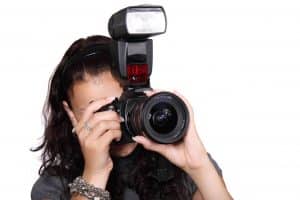When taking indoor and outdoor pictures as an amateur or professional photographer, it is easy to be tempted to press the flash button of your camera. That is because of the perception and norm shared by some photographers and camera subjects that a good and quality picture is flash enabled. While partly true, there are instances where a camera flash light may not be necessary. Like using a flash on a subject in a low light environment like a dark room will result in light imbalances and a final blurry picture. So When Should You Use A Flash?
Circumstances Dictating the Use of a Flash
-
Begin with a Photo Idea
Before using your camera flash, it’s always good to answers the question: what kind of photo do I want? As your photo idea will dictate the camera setting. Furthermore, you should be aware that in case you decide to use a flash for your picture; it will affect the colour temperature, highlights and shadows of your picture. So, try and settle on a picture idea first, as it determine the kind of lighting you need, and consequent need for flash use.
-
In Low Ambient Environments
Low light environments like: reception, churches among others require a boost in lighting. That is because most of these places have low ambient light. The idea of using flash here is to get a photo that is light balanced. Secondly, there are indoor environments that favour mounting of flash. Like a white walled church may warrant the use of a flash, as the flash from your Dslr camera can be mounted to bounce of the wall and ceiling of the church.
-
When creating unique indoor photos
When it comes to getting unique indoor pictures, some cameramen use the of flash camera setting. This setting involves using artificial lights to balance the room and then placing extra artificial light behind the subject. This setting usually makes simple photos look spectacular.
-
When Your Outdoor Subject Is Poorly Lit
Not many photographer pay close attention to using camera flash outdoors; they believe that the natural light is enough. Sometimes this isn’t the case. Natural Light during later afternoons is notorious for shifting and to stabilize it, you will need to properly set up your flash light.
Conclusion
Whether you are a fun of the Digital Single Lens Reflex camera (DSLR) or Single Reflex camera (SLR), having the right knowledge of flash use can greatly impact the quality of your final photos as not all occasions call for flash use.




